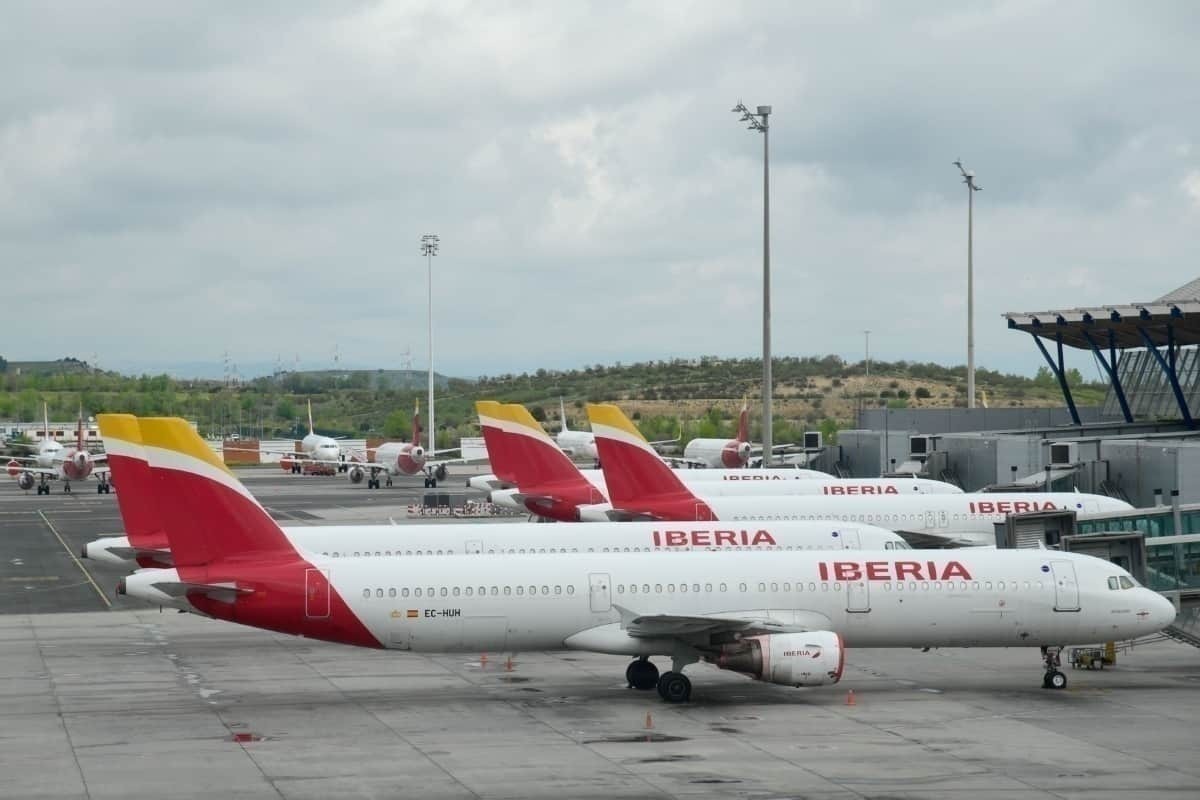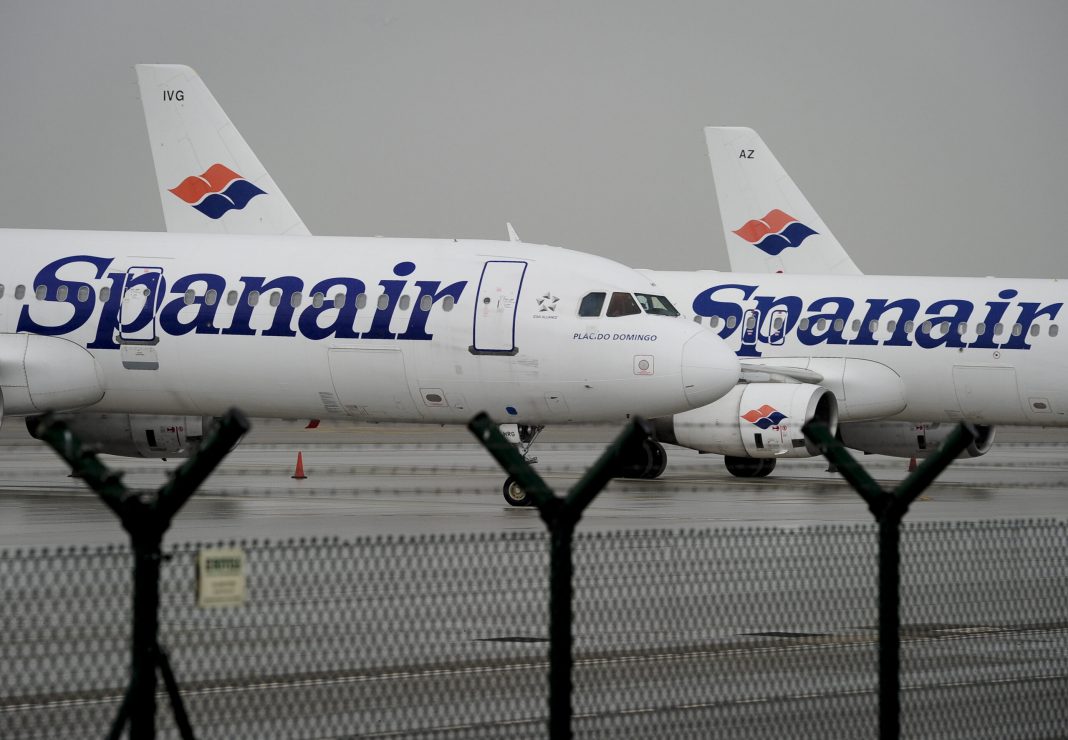Established in December 1986 as a Spanish charter airline, Spaniar was a joint venture between Scandinavian Airlines System (SAS) and package tour operator Viajes Marsans. Based at Josep Tarradellas Barcelona–El Prat Airport (BCN), Spanair began operations in 1988 with European charters and long-haul flights to the United States, Mexico, and the Dominican Republic.

In June of 2007, SAS announced that they wanted to sell their majority share in the airline. Still, it removed the offer a year later after receiving no bids on a sales price that it considered being reflective of the airline’s value.
Catalonia invests in Spanair
Despite having taken the airline off the market, SAS received an offer of one euro from a group of Catalan investors that included the autonomous government of Catalonia. At the time, Spanish national flag carrier Iberia centered all of its international flights from Madrid Barajas Adolfo Suárez Airport (MAD), sidelining Barcelona as a secondary airport.

The Catalans thought that by acquiring Spanair, they would develop competition for Iberia by making Barcelona a major hub in its own right.
The crash of flight 5022
Spanair’s darkest day and for which the airline will always be remembered, happened on August 20, 2008, when Spanair flight number 5022 crashed just after take-off from runway 36L at Madrid Barajas Airport. The McDonnell Douglas MD-82, aircraft registration EC-HFP had taken off from Barcelona–El Prat Airport and had made a stopover in Madrid before continuing to Gran Canaria in the Canary Islands.

The accident, which occurred at 14:24, was the plane’s second attempt at taking off following an earlier aborted attempt due to excessive temperatures in the ram air temperature (RAT) probe. The aircraft, which was manufactured in 1993 and acquired by Spanair in 1999, was towed to a parking area where maintenance workers de-activated the RAT probe’s heater, as icing was not expected to be an issue on the journey to the Canary Islands.
Foul play was not suspected
While attempting to take off for a second time, the aircraft managed to get airborne for a brief time before crashing and bursting into flames. While there was no immediate account of what went wrong, Spain’s minister in charge of civil aviation Magdalena Álvarez told the press that 153 people had died and 19 had survived. She said that the flight data recorders had been recovered and that foul play was not expected to be the cause of the accident.
A passenger on a flight that just landed immediately after the crash said he saw the plane lift off briefly before its left wing struck the ground. He said the wing collapsed, allowing the plane to come to a rest on its left side, making the emergency exits unusable. Another obstacle that added to the loss of life was that the plane had set fire to the hayfield where it crashed and that the flames made it difficult for rescuers to get to.

“The scene is devastating,” Pablo Albella, an emergency rescue worker, told The A.P. “The fuselage is destroyed. The plane burned. I have seen a kilometer of charred land and few whole pieces of the fuselage.”
When speaking about the accident, SAS said it was doing “everything possible to help passengers and next of kin and to assist Spanish authorities at this difficult time.”
5022 was Spain’s third-worst air disaster
The crash of flight number 5022 was the third-worst in Spanish aviation history, following on from an Avianca Boeing 747 that crashed near Madrid in 1983 in which 183 people died, and the worst ever crash in aviation history in 1977. The worst ever crash occurred in Tenerife when two Boeing 747s happened to be on the runway at the same time. A KLM Royal Dutch Airlines jumbo jet was at takeoff speed when it collided with a Pan American 747 that was still taxiing on the runway. An investigation later blamed the KLM captain for taking off without receiving permission and not knowing that another aircraft was also on the runway. 582 people lost their lives in the crash, which is still the worst ever commercial aviation accident.
They forgot to deploy the flaps
A preliminary report on the Spanair accident revealed that the aircraft had attempted to take off with the flaps at 0°and that an alarm that should have warned the pilots never sounded. A final report into the crash concluded that the failure to deploy flaps was the accident’s cause.
In a move to rebrand itself and hopefully move on from the deadly accident, Spaniar asked the public to develop ideas for a new logo, which Spanair began applying to its corporate identity in 2009. Financially though, the airline was in trouble and needed emergency funding, which arrived in the form of a Catalan government approved a €10.5 million loan. Unfortunately, things did not get any better, and Spanair ceased operations on 27 January 2012.

According to the aviation enthusiast website Planespotters.net Spanair operated a fleet comprised of the following aircraft:
- 19 x Airbus A320-200
- 5 x Airbus A321-200
- 4 x Boeing 717-200
- 6 x Boeing 757-200
- 3 x Boeing 767-300
- 3 x Fokker F100
- 1 x McDonnell Douglas DC-9-50
- 3 x McDonnell Douglas MD-81
- 16 x McDonnell Douglas MD-82
- 27 x McDonnell Douglas MD-83
- 18 x McDonnell Douglas MD-87
Spanair never lived up to expectations
Despite Spanair’s attempts to be a Catalonian airline that could compete with Iberia and Vueling, it never lived up to its full potential. Operating mainly charter flights and scheduled services to obscure European destinations, Spanair thought that being a member of the Star Alliance would help it achieve its goals.

At best, Spanair can be described as what today would be called a low-cost carrier that sold food and drinks for purchase during flights. Unlike LCCs, it did offer a business class option on many flights that provided passengers with free drinks and a hot meal.
During its brief lifespan, Spanair could have done things differently and perhaps survived, but today, unfortunately, the only thing it is remembered for is the deadly 2008 Madrid crash.
Did you ever fly with Spanair? If so, we would love to read about what they were like in the comments section.
[ad_2]
Source link


